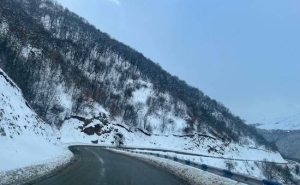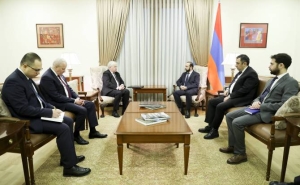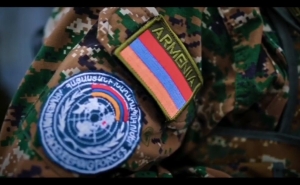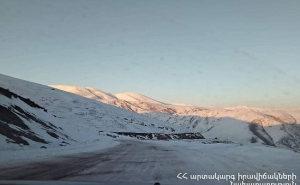UNESCO 70 Anniversaries
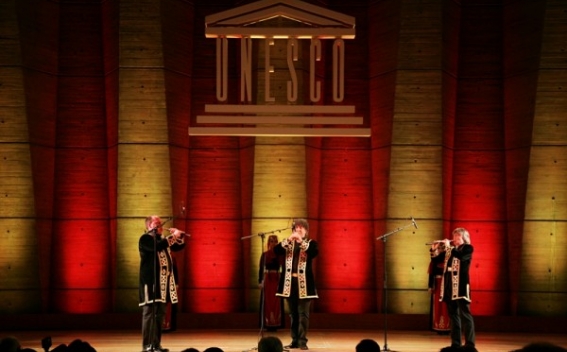
The United Nations Organization for Education, Science and Culture (UNESCO) was founded on 16 November 1945. UNESCO has 195 Members and eight Associate Members. It is governed by the General Conference and the Executive Board. The Organization has more than 50 field offices around the world.
The UNESCO's Moscow Office Country Programming Document (UCPD) in Armenia was outlined to be linked with and complementary to the first United Nations Development Assistance Framework (UNDAF) for Armenia (2005- 2009) which was aimed at establishing a common framework for all UN Agencies operating in the country. The UNDAF defined the spheres where the program can contribute significant and strategic contribution in order to meet the economic, social, governance and environmental challenges that the country faces. The UN in
- Implementing the Poverty Reduction Strategy Paper;
- Reaching the international development goals, including the Millennium Development Goals (MDGs);
- Achieving the rights embodied in the Armenian Constitution and the international conventions and treaties acceded to by the country.
 The world heritage sites defined by UNESCO in
The world heritage sites defined by UNESCO in

The UNESCO in its tentative list has included the following 4 properties; the archeological site of the city of
Other materials on this subject
- UN Secretary-General Condemns Attack Near Russian Embassy in Kabul The secretary-general conveys his condolences to the families of the deceased and wishes a speedy recovery to the injured.
- Armen Sarkissian Congratulates Antonio Guterres on the Re-Election as Secretary General of the Organization President of the Republic Armen Sarkissian sent a congratulatory message to Antonio Guterres on his re-election as Secretary-General of the United Nations.
- UN Secretary General Called COVID-19 a Number One Global Security Threat The coronavirus pandemic has gotten out of hand and the number of its victims will soon surpass 1 mln, Antonio Guterres said. "Soon, we will pass the grimmest of milestones: 1 million lives lost to the...
- Zohrab Mnatsakanyan Addressed a Letter to the UN Secretary The assistance and access of the United Nations specialized agencies including and especially of the World Health Organization to the people residing in the conflict-affected areas is essential in this...
- UN's Guterres Criticizes Trump's Move to Cut WHO Funding “The lessons learned will be essential to effectively address similar challenges, as they may arise in the future. But now is not that time,” the UN leader continued in a statement.
-
 17:08
17:08The regular session of the Anti-corruption Policy Council takes place in Jermuk
-
 15:05
15:05The Prime Minister sends congratulatory messages to the supreme leader of Iran and the President of Iran
-
 11:11
11:11Armenia sends earthquake aid to Turkey
-
 10:43
10:43Commemoration of the Pontiff St. Sahak Partev
-
 09:16
09:16Some roads are closed and difficult to pass in Armenia
-
 19:55
19:55Phone conversation of the Foreign Minister of Armenia with the U.S. Assistant Secretary of State for European and Eurasian Affairs
-
 18:30
18:30Prime Minister Pashinyan and President Khachaturyan meet
-
 18:20
18:20Ararat Mirzoyan with Co-Chairman of the OSCE Minsk Group of France Brice Roquefeuil
-
 17:01
17:01Humans could land on Mars within 10 years, Musk predicts
-
 16:45
16:45France, US urge 'immediate' end to Nagorno Karabakh blockade
-
 16:01
16:01Blockaded Nagorno Karabakh launches fundraiser to support quake-hit Syria
-
 15:59
15:59Earthquake death toll in Turkey rises to 18,342
-
 15:43
15:43Ararat Mirzoyan Held a Telephone Conversation with Sergey Lavrov
-
 15:06
15:06French president rules out fighter jet supplies to Ukraine in near future
-
 14:47
14:475 Day Weather Forecast in Armenia
-
 14:44
14:44President Vahagn Khachaturyan wrote a note in the book of condolences opened in the Embassy of Syria in Armenia
-
 14:20
14:20Azerbaijan’s provocations impede establishment of peace and stability – Armenian FM tells Russian Co-Chair of OSCE MG
-
 12:57
12:57France representation to OSCE: Paris calls on Azerbaijan to restore freedom of movement through Lachin corridor
-
 11:40
11:40Command of Kosovo forces highly appreciated preparation of Armenian peacekeepers
-
 10:16
10:16The United States withdrew from sanctions against Syria for six months the provision of assistance after the earthquake
day
week
month
Humidity: %
Wind: km/h


